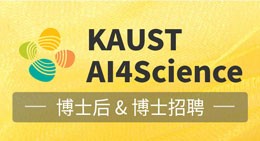-
Kinetics and mechanistic insights into hydrogenative rearrangement of hydroxymethylfurfural over acid-Nickel catalysts AlChE J. (IF 3.5) Pub Date : 2025-04-08
Fuzeyu Zhong, Weixiao Sun, Xiaohu Ge, Keng Sang, Huihui Qian, Wenyao Chen, Gang Qian, Yueqiang Cao, Jianrong Zeng, Lina Li, Xuezhi Duan, Xinggui Zhou, Jing ZhangCatalytic hydrogenative rearrangement of furanic aldehydes is crucial for producing biomass-derived cyclopentanone fine chemicals. However, designing highly selective catalysts remains challenging due to the interplay among tandem hydrogenation, ring-opening, aldol condensation, dehydration, and parallel ring-hydrogenation. Here, we employ a single self-assembly step by depositing phosphonic acids
-
Efficient separation of Pd(II) from HCl media by bifunctional thiomorpholinium-based ionic liquids AlChE J. (IF 3.5) Pub Date : 2025-04-08
Qing Liu, Wanru Wang, Ming Yi, Weichi Chen, Kewen TangBifunctional thiomorpholinium-based ionic liquids were synthesized for the efficient separation of Pd(II) in HCl media. The presence of S atoms in the six-membered ring facilitated the efficient extraction of Pd(II), with a remarkable extraction capacity of 212 mg/g. The extraction mechanism involved anion exchange and coordination. Specifically, PdCl42− preferentially combined with positive N atoms
-
Constructing grain boundary to stabilize Cu0/Cu+ interfacial sites for efficient CO2 reduction reaction AlChE J. (IF 3.5) Pub Date : 2025-04-08
Saiwu Yang, Yongjun Shen, Xiaoqing Mao, Congcong Li, Zhongliang Liu, Bin Wang, Delin Zhu, Huihui Li, Chunzhong LiThe electrochemical CO2 reduction reaction (CO2RR) to multi-carbon (C2+) products derived by renewable energy represents a promising strategy for mitigating CO2 emissions. One of the intensively studied strategies is to stabilize Cu+ species on catalysts to facilitate the adsorption of *CO intermediates. However, the reductive environment during CO2RR renders the Cu+ species on the catalyst surface
-
Issue Information ‐ Table of Contents AlChE J. (IF 3.5) Pub Date : 2025-04-07
Click on the article title to read more.
-
Flow electrooxidation of chiral alcohols with high enantioselectivity via integrated metal‐organic frameworks and aminoxyl radicals AlChE J. (IF 3.5) Pub Date : 2025-04-05
Linhan Ren, Jiayuan Li, Suiqin Li, Kai Li, Yuhang Wang, Jieyu Wang, Ying Chen, Jiahui He, Xing Zhong, Jianguo WangChiral compounds play a pivotal role in pharmaceutical chemistry, and the oxidation of chiral alcohols to corresponding carboxylic acids is a crucial step. However, the enantioselectivity is susceptible to degradation due to sensitivity to enol isomerization and racemization. In this study, Ru/S‐Ni‐MOFs electrocatalysts with high specific surface area were synthesized. After undergoing electrochemical
-
A differentiable deep learning approach for inverse optimization of hopper flows in particulate manufacturing AlChE J. (IF 3.5) Pub Date : 2025-04-05
Chengbo Liu, Tingting Liu, Yu Jiang, Yuanye Zhou, Yanjiao Li, Kun Hong, Xizhong ChenUnderstanding granular dynamics is essential for many industrial applications, yet significant challenges persist. The discrete element method allows for direct tracking of particle motions, but it suffers from high computational costs, in particular for inverse problems. Recently, machine learning has seen rapid development and brings new possibilities for tackling these challenges. In this work,
-
Optimal reactive operation of general topology supply chain and manufacturing networks under disruptions AlChE J. (IF 3.5) Pub Date : 2025-04-04
Daniel Ovalle, Joshua L. Pulsipher, Yixin Ye, Kyle Harshbarger, Scott Bury, Carl D. Laird, Ignacio E. GrossmannSupply and manufacturing networks in the chemical industry involve diverse processing steps across different locations, rendering their operation vulnerable to disruptions from unplanned events. Optimal responses should consider factors such as product allocation, delayed shipments, and price renegotiation, among other factors. In such context, we propose a multiperiod mixed‐integer linear programming
-
Carburization induced phase transition of Ni3In to Ni3InC0.5 intermetallic carbide for acetylene semihydrogenation AlChE J. (IF 3.5) Pub Date : 2025-04-04
Xiaohu Ge, Nina Fei, Yueqiang Cao, Hao Jiang, Jing Zhang, Gang Qian, Xinggui Zhou, Xuezhi DuanIn this work, we develop a carburization strategy to transform hexagonal Ni3In into face‐centered cubic Ni3InC0.5 intermetallic carbide, leveraging partially isolated Ni sites for improved acetylene semihydrogenation. The catalyst synthesized via carburization of Ni3In intermetallic compound derived from Ni/In/Mg/Al layered double hydroxides in a C2H2/H2 atmosphere is evidenced to show Ni3InC0.5 intermetallic
-
Reactive simulation of an industrial‐scale FCC reaction‐regeneration full loop system AlChE J. (IF 3.5) Pub Date : 2025-04-02
Yuting Wu, Shikun Zhong, Bona Lu, Shanglin Liu, Youhao Xu, Wei WangThis study pioneers a three‐dimensional, transient reactive simulation of an industrial fluid catalytic cracking full‐loop system. Within a two‐fluid model framework, the simulation incorporates the Energy Minimization Multiscale (EMMS)‐based models to account for the effects of mesoscale flow structures on drag and heat transfer, and integrates a 12‐lumped kinetics model and a coke combustion model
-
Globally optimal basic design of multiple‐unit heat exchangers AlChE J. (IF 3.5) Pub Date : 2025-04-02
Miguel J. Bagajewicz, Andre L. M. Nahes, Eduardo M. Queiroz, Diego G. Oliva, Javier A. Francesconi, André L. H. CostaA novel approach (Complete Set Trimming) to address the globally optimal design of multiple‐unit heat exchangers (Shell and Tube, Double Pipe, Plate, etc.) is presented. Three arrangements: Series, Parallel, Series–Parallel, and Parallel–Series, for minimizing area, CAPEX, or total annualized cost are considered. The geometry of all (equal) units is determined together with the number of units and
-
Microscopic kinetics of scission and reformation in the pyrolysis of nitrocellulose AlChE J. (IF 3.5) Pub Date : 2025-04-02
Changwei Liu, Haojie Qian, Qing Wang, Jinkai Qiu, Yajun Ding, Cheng Lian, Honglai LiuNitrocellulose (NC) is essential in high‐energy propellants, with nitrogen content affecting its pyrolysis rate and thermal stability. This study creates all‐atom models of NC with varying nitrogen levels to explore pyrolysis mechanisms and validate them against experimental thermal response data. Results show that RO − NO2 bond cleavage initiates NC decomposition. Lower nitration levels convert nitrogen
-
Foaming prediction in pure liquids from dimensionless numbers inspired by the theory of fluid behavior for drops AlChE J. (IF 3.5) Pub Date : 2025-04-02
Surya Prakash Tiwari, Robert L. Thompson, Wei Shi, Nicholas Siefert, David Hopkinson, Janice A. SteckelFoaming prediction is critical for selecting materials and designing processes in industries such as bioprocessing and gas processing. Existing models lack the generality needed for a wide range of materials and overlook the foaming behavior in pure liquids. This work presents a novel method for predicting foaming in pure liquids based on their density, surface tension, and viscosity, using Reynolds
-
Hydrophobic Ni foam catalyst for nitrobenzene hydrogenation enhancement in micropacked bed reactors AlChE J. (IF 3.5) Pub Date : 2025-04-02
Hong‐Da Zhang, Wei‐Yao Yang, Miao Pang, Ya‐Qiao Tian, Shi‐Chao Su, Zhi‐Ping Zhao, Le SangNon‐modified Pd/PDA/Ni foam, hydrophobic modified F9‐Pd/PDA/Ni foam, and F17‐Pd/PDA/Ni foam catalysts are successfully prepared and used for NB hydrogenation in micropacked bed reactors (μPBRs). The catalytic performance increases with the addition of water in the water–methanol mixed solvent. In the mixed solvent with 50 v/v% water, F17‐Pd/PDA/Ni foam can almost completely convert nitrobenzene (NB)
-
A universal spatial group contribution method by 3D‐structures for predicting the thermodynamic properties AlChE J. (IF 3.5) Pub Date : 2025-03-31
Jingxuan Xue, Xiaojie Feng, Qingzhu Jia, Qiang Wang, Fangyou YanClassical group contribution method, as one of the main methods for estimating thermodynamic properties, is developed with the number of groups, ignoring the influence of group characters. In this work, the spatial group contribution (SGC) method combining Euclidean distance and quantum properties is proposed, which uses the spatial group factor (SGF) and the spatial position factor (SPF) to reflect
-
Reinforcement learning for optimal control of stochastic nonlinear systems AlChE J. (IF 3.5) Pub Date : 2025-03-30
Xinji Zhu, Yujia Wang, Zhe WuA reinforcement learning (RL) approach is developed in this work for nonlinear systems under stochastic uncertainty. A stochastic control Lyapunov function (SCLF) candidate is first constructed using neural networks (NNs) as an approximator to the value function, and then a control policy designed using this SCLF is developed to ensure the stability in probability of the stochastic nonlinear system
-
A novel methodology to determine the safe operating regime for an offshore wind‐integrated electrolysis system AlChE J. (IF 3.5) Pub Date : 2025-03-30
Ahmed Hamdy El‐Kady, Md. Tanjin Amin, Faisal Khan, Mahmoud M. El‐HalwagiThe offshore wind‐integrated hydrogen production system is a novel approach to producing green energy carriers and chemicals. Even with the significant environmental benefits of this approach, there are major questions and concerns regarding its safety. Understanding better how operational parameters can promote safer operations is necessary. This paper overcomes key aspects of this gap by developing
-
Non‐Fickian mesoscopic modeling of sorption and permeation in polymer nanocomposite membranes AlChE J. (IF 3.5) Pub Date : 2025-03-30
Youness El Rhali, Ali El AfifTo investigate the interactions among nanoscale effects, viscoelasticity, and diffusion in polymer nanocomposite membranes, we have developed a non‐Fickian mesoscopic model that describes the dynamics of penetrant concentration and the polymer conformation tensor. The model consists of nonlinear governing equations, supplemented by an expression for internal stresses. Key dimensionless parameters are
-
Biochar assembled Ni atom‐clusters for hydrogen‐free and solvent‐free deoxygenation of fatty acids AlChE J. (IF 3.5) Pub Date : 2025-03-30
Bin Chen, Xingwen Cha, Xuexue Dong, Juanjuan Bian, Jiale Huang, Qingbiao Li, Xiaoqing Huang, Guowu ZhanUpgrading biomass‐derived fatty acids through the H2‐free and solvent‐free catalytic deoxygenation process is both safe and eco‐friendly. Herein, we used modified rice husk‐derived biochar with ultra‐high specific surface area and abundant surface groups as a support to design a homologous bimetallic site catalyst containing Ni single atoms (Ni1) and Ni nanoclusters (Nin), the synergy between which
-
An integrated biorefinery model for optimized 2‐vinylfuran production AlChE J. (IF 3.5) Pub Date : 2025-03-30
Yuqiu Chen, Raul F. Lobo, Marianthi G. IerapetritouWe integrate reverse reaction pathway screening, process design and simulation, and process assessment to ensure the technical feasibility, economic viability, and environmental sustainability of biorefineries. We propose an efficient production process for 2‐vinylfuran that fully utilizes second‐generation biomass. Economic assessment indicates that this process can produce 2‐vinylfuran at a competitive
-
Hindered cracking in colloidal suspension coatings via evaporation‐driven lyotropic liquid crystals AlChE J. (IF 3.5) Pub Date : 2025-03-29
Masato YamamuraWe demonstrate that lyotropic liquid crystalline (LC) phases, formed by the molecular interactions between 1‐glyceryl monooleyl ether (GME) and water, offer new pathways for producing crack‐free particulate films from colloidal suspensions. Drying experiments on titanium dioxide‐ethanol‐water‐GME suspension systems revealed a 15‐fold increase in the critical cracking thickness, above which cracks spontaneously
-
Ni nanoparticles decorated Ni–N–C catalyst: Dual‐site synergy for enhanced catalytic hydrogenation AlChE J. (IF 3.5) Pub Date : 2025-03-29
Min Yu, Guangji Zhang, Kai Li, Feiying Tang, Liqiang Wang, You‐Nian LiuIt is highly desired but still challenging to engineer single‐atom catalysts featuring an M–N–C configuration for efficient catalytic hydrogenation. Herein, Ni nanoparticles (Ni NPs) modified Ni–N–C (termed as Ni1+NPs/NSPC) were fabricated to demonstrate the feasibility of enhancing the catalytic hydrogenation performance of M–N–C by introducing metallic NPs sites. NiNPs sites and Ni1 sites displayed
-
Sequential nanoprecipitation for theranostics: Resolving assembly timescale mismatch in composite nanoparticle synthesis AlChE J. (IF 3.5) Pub Date : 2025-03-29
Rachel E. Pollard, Nouha El Amri, Parker K. Lewis, Jacques Zacharie Thaddeus P. Ponce, Ashley Han, Xiuxian Li, Nathalie M. PinkertonBiomedical applications of colloidal nanocrystals (NC) have focused on nanoscale theranostics, that is, composite nanoparticles (CNP) that function as bioimaging probes while simultaneously delivering therapeutic payloads. Thus, there is a need for controlled CNP manufacturing methods that sufficiently decouple vehicle and cargo properties. Here, we investigate the assembly of poly(ethylene glycol)‐b‐poly(lactic
-
A kinetic model for high‐gravity intensified Fe‐MnOX/AC‐catalyzed ozonation of phenol: Direct and indirect reaction AlChE J. (IF 3.5) Pub Date : 2025-03-27
Zhiwei Zhao, Youzhi Liu, Weizhou JiaoIn this study, an apparent reaction kinetic model is established for high‐gravity intensified Fe‐MnOX/AC‐catalyzed ozonation of phenol in a rotating packed bed (PRB). It is found that this model can accurately predict the removal rate of phenol, with the deviations between experimental and theoretical values being less than 8%. The rate constants of the direct reaction of ozone and the indirect reaction
-
Adjustable robust superstructure optimization with mixed‐integer recourse for the continuous rufinamide manufacturing AlChE J. (IF 3.5) Pub Date : 2025-03-27
Taoyu Qiu, Wenhui Yang, Congqin Ge, Lifeng Zhang, Zhihong YuanTo accelerate the applied research pace for the continuous synthesis of high value‐added rufinamide aiming at industrial applications, this work proposes a two‐stage adjustable robust optimization framework with mixed‐integer recourse to identify the optimal one from more than 500 possible alternative continuous synthetic routes. The overall rufinamide manufacturing process can be divided into three
-
Facet‐regulated local coordination of oxygen species on MgO for efficient cycloaddition of CO2 with propylene oxide AlChE J. (IF 3.5) Pub Date : 2025-03-27
Ranfei Fu, Juncong Yuan, Yaqian Li, Zeping Wang, Jianlin Cao, Jiaxu Wang, Jiali Dai, Baoyang Zhang, De Chen, Chaohe Yang, Xiang FengRegulating the concentration of low‐coordinated oxygen species on certain exposed crystal facets of oxides still remains a challenge. Herein, we developed a facile facet‐engineering method to construct regulable ratios of (100), (110), and (111) facets on the MgO by modulating the surface curvature. As revealed by in situ CO2 diffused reflectance infrared Fourier transform spectroscopy and kinetic
-
The transition from the fixed to the fluidized state of well‐mixed binary‐solid mixtures in a liquid upflow AlChE J. (IF 3.5) Pub Date : 2025-03-25
Renzo Di Felice, Filippo MarchelliIn this work, an investigation of the transition from fixed to fluidized state of initially homogeneous binary‐solid mixtures due to an upward liquid flux was carried out. Like for analogous gas systems, it was confirmed that the full transition occurs over a range of fluid velocities, from the initial to the final fluidization velocity. Based on fluid dynamic equilibrium considerations, we proposed
-
Remarkable reduction of microbubble size by constructing a flexible interaction region in a T‐junction microchannel AlChE J. (IF 3.5) Pub Date : 2025-03-25
Lin Sheng, Junjie Wang, Jian Deng, Guangsheng LuoHigh‐efficiency reduction of the microbubble size is important for bubble‐based microflow processes but has hitherto required high‐energy‐consumption methods. This study designed a new T‐junction microchannel with a flexible interaction region exhibiting apparent superiority in producing smaller bubbles with high energy‐utilization efficiency, and for the first time breaks the limitation of the flow
-
An expanded library of 76 integration sites for gene expression in Saccharomyces cerevisiae AlChE J. (IF 3.5) Pub Date : 2025-03-25
Xiaolong Teng, Yuanwei Gou, Xuanwei Ding, Yueping Zhang, Di Gao, Yingjia Pan, Xiaolin Shen, Jiazhang Lian, Chun Li, Jinyu Fu, Shuobo ShiConstructing efficient yeast cell factories involves introducing heterologous biosynthetic pathways and overexpressing key genes. Chromosomal integration of recombinant genes is preferred over episomal plasmids for greater stability during large‐scale industrial cultivation. The expression of complex pathways in engineered microbes necessitates the activation of an increasing number of genes, a process
-
Enhanced coupling of the tubular direct ammonia solid oxide fuel cells for efficient ammonia-to-power AlChE J. (IF 3.5) Pub Date : 2025-03-24
Shuai Chen, Xiaofei Liao, Jiacheng You, Yiting Jiang, Fulan Zhong, Huihuang Fang, Yu Luo, Lilong JiangDirect ammonia solid oxide fuel cells (DA-SOFCs) have triggered great interest due to their efficient power generation from ammonia directly. However, the compatible match of ammonia decomposition and electrooxidation in the DA-SOFCs remains greatly challenging due to their endo/exothermic properties. Herein, multi-sizes tubular DA-SOFCs were systematically investigated for performance evaluation of
-
On the chaotic characteristics and turbulent mixing mechanisms of elliptical unbaffled stirred tanks AlChE J. (IF 3.5) Pub Date : 2025-03-23
Anqi Li, Yuan Yao, Xin Zhang, Shiliang Gu, Yu Wan, Ping Li, Yundong Wang, Changyuan Tao, Zuohua LiuThis study investigates the chaotic characteristics and turbulent mixing mechanisms of an elliptical unbaffled stirred tank. Simulations and experiments demonstrate that the mixing performance of the elliptical unbaffled stirred tank outperforms that of a cylindrical one. The elliptical unbaffled stirred tank suppresses the formation of the center‐surface vortex and columnar eddy while inducing numerous
-
Aqueous phase reforming of glycerol over Pt/NiAl2O4 catalyst AlChE J. (IF 3.5) Pub Date : 2025-03-23
Lingxiang Huang, Xiaohui Liu, Yanqin Wang, Yongsheng Li, Yong GuoGlycerol hydrogen production by aqueous phase reforming (APR) has been shown to be an efficient method of treating glycerol, which is an abundant by‐product of biodiesel production. This study investigates the APR of glycerol using a Pt/NiAl2O4 catalyst, aiming to develop a sustainable method for hydrogen production from biodiesel byproducts. In comparison with traditional supports, NiAl2O4 provides
-
Solution of boundary value problems for batteries: Operator‐theoretic methods AlChE J. (IF 3.5) Pub Date : 2025-03-22
Doraiswami Ramkrishna, Kandukuri S. GandhiBatteries with porous electrodes of negligible ionic and electronic conduction resistance are modeled with reaction‐diffusion equations in multilayered media. The classical separation of variables becomes inapplicable to battery problems because of nonlinearities in reaction rates and constraints of imposed current. A linear operator‐theoretic approach to the diffusive part converts the battery equations
-
Issue Information ‐ Table of Contents AlChE J. (IF 3.5) Pub Date : 2025-03-20
Click on the article title to read more.
-
Synthesis of heat‐integrated thermally coupled nonsharp distillation using self‐adaptive spherical search AlChE J. (IF 3.5) Pub Date : 2025-03-20
Anqing Wang, Ruixuan Ying, Yasuhiro FukushimaAlthough thermally coupled distillation (TCD) exhibits strong energy efficiency, the possibility of utility cost savings remains debatable. TCD designs that do not consider vapor transport can underestimate costs, making section rearrangement crucial to find more operable configurations. This study proposes an algorithm to generate a separation matrix of basic configurations, enumerating their thermodynamically
-
A prediction model for thermal conductivity of supercritical carbon dioxide AlChE J. (IF 3.5) Pub Date : 2025-03-18
Chenyang Sun, Chaofeng Hou, Wei Ge, Yaning ZhangThermal conductivity of supercritical carbon dioxide (scCO2) plays a pivotal role in designing various industrial and energy devices. However, there is currently no universally accepted theoretical model to accurately describe its thermal conductivity. In this study, based on the thermal conductivity models for gaseous and liquid matters and kinetic theory, we propose a concise model to predict the
-
Tailoring titanium species to boost bifunctional Au‐TS‐1 catalyzing propylene hydro‐oxidation AlChE J. (IF 3.5) Pub Date : 2025-03-18
Yujie Liao, Zhihua Zhang, Yueqiang Cao, Shudong Shi, Daiyi Yu, Xuezhi Duan, Xinggui ZhouThe speciation of titanium is a crucial factor that influences the catalytic activity of TS‐1, an efficient catalyst for selective oxidations. This study investigates how different thermal treatment conditions affect titanium speciation in TS‐1. A variety of characterization techniques were employed to identify changes in the titanium speciation, while propylene hydro‐oxidation served as a probe reaction
-
Cobalt disulfide promotes the selective rearrangement–hydrodeoxygenation of furan alcohols to cyclopentenones AlChE J. (IF 3.5) Pub Date : 2025-03-15
Miao Ding, Xiang Li, Zhijun Xie, Jun Wang, Junjian Xie, Ji‐Jun Zou, Qiang DengDeveloping an efficient catalyst for converting furan alcohols to cyclopentenones for fine chemical synthesis is crucial but challenging due to the easy overhydrogenation side reactions to tetrahydrofuran alcohols and cyclopentanones. This study demonstrates that cobalt disulfide (CoS2) exhibits an unprecedented yield of 80.1% during rearrangement–hydrodeoxygenation of furan alcohol to cyclopentenone
-
Structured bubbling flow in fluidized beds with oscillating gas injection which alternates with horizontal position AlChE J. (IF 3.5) Pub Date : 2025-03-15
Javad Omidi, Christopher M. BoyceStructured bubbling with a triangular lattice pattern has been demonstrated previously to form in fluidized beds with oscillated gas injection velocity. Here, we demonstrate using two‐fluid model simulations that dividing the gas distributor into slices and oscillating gas flow with a phase offset between consecutive slices enables structured bubbling to form with a wider range of bubble sizes and
-
Flexible design of renewable methanol production systems based on regulation strategy of operating windows AlChE J. (IF 3.5) Pub Date : 2025-03-12
Xinshan Kong, Xin Gao, Lixia Kang, Yongzhong LiuCarbon dioxide hydrogenation to methanol is one of the viable ways for large‐scale consumption of renewable energy. The intermittent and stochastic character of renewable energy leads to frequent changes in the operating conditions of production systems. Conventional design that focuses on the economic performance leads to rigid operating conditions and narrow operating windows of the production systems
-
Concentration distribution and mass transfer process intensification of single droplet in swirl flow field AlChE J. (IF 3.5) Pub Date : 2025-03-12
Yuting Xu, Yun Shuai, Zhengliang Huang, Wei Li, Jingdai Wang, Yongrong YangIn the MIBK‐acetic and acid‐water system, the effects of swirl flow on the flow, concentration distribution, and mass transfer in a single droplet were investigated using high‐speed camera, planar laser‐induced fluorescence (PLIF), and particle image velocimetry (PIV) methods. The results show that swirl flow can cause forced convection in the droplet, accelerate solute diffusion to the phase interface
-
Tailoring bubble size through acoustic‐assisted microbubble generation AlChE J. (IF 3.5) Pub Date : 2025-03-12
Min Uk Jung, Yeo Cheon Kim, Ghislain Bournival, Seher Ata -
Predicting the solvent effect on crystal morphology via quantum mechanical methods AlChE J. (IF 3.5) Pub Date : 2025-03-12
Yongsheng Zhao, Robert Gee, Michael F. DohertyThe solvent is the most important external influence on crystal morphology. Correctly interpreting solvent effects is essential to engineer the desired crystal morphology with specific properties. In this study, we propose a method based on quantum mechanical calculated gas phase interaction + Solvation Model Based on Density (SMD) calculated solvation free energy to predict the solvent‐modified bond
-
Analysis of steric hindrance in the separation of ethanol–methyl acetate azeotropic mixture using deep eutectic solvents AlChE J. (IF 3.5) Pub Date : 2025-03-12
Wenli Liu, Ruoyu Hu, Yu Wang, Yinglong Wang, Jingwei Yang, Guoxuan Li, Jianguang QiThe separation of azeotropes is of great significance for improving product quality, optimizing production processes, and promoting the development of related technologies. This study used quaternary ammonium salt‐based deep eutectic solvents (DESs) to separate azeotropic ethanol and methyl acetate mixtures. COSMO‐RS software was used to facilitate the screening of the extractants. The best extractant
-
Highly efficient and mild synthesis of multimetallic metal–organic framework nanoparticles for enhanced oxygen evolution reactions AlChE J. (IF 3.5) Pub Date : 2025-03-12
Xin‐Ran Shi, Sai‐nan Guo, Meng Qiao, Jie‐Xin WangMultimetallic metal–organic framework (MOF) nanoparticles have been regarded as promising electrocatalysts for the oxygen evolution reaction (OER) due to their small size, porous structure, and synergistic active metal site. However, limitations such as stringent preparation conditions, long reaction times, and low yields restrict their further application. Herein, an instantaneous and continuous approach
-
Microbubble swarm in a HiGee‐aided bubble column reactor: Size, gas holdup, and effective interfacial area AlChE J. (IF 3.5) Pub Date : 2025-03-12
Li‐Hua Wang, Hai‐Long Liao, Liang Zheng, Zhi‐Xuan Fan, Hai‐Kui Zou, Yong LuoMicrobubble technology is promising for intensifying gas–liquid mass transfer in the bubble column reactor (BCR). The HiGee microbubble generator (HMG), flexibly controlling the microbubble size by adjusting the rotational speed, was developed for the BCR with obvious advantages. However, the hydrodynamics and mass transfer performance of the microbubble swarm generated by HMG in the bubble column
-
Rigid and flexible coupled micropore membranes enabling ultra‐efficient anion separation AlChE J. (IF 3.5) Pub Date : 2025-03-12
Ziqiang Hong, Zongliang Wan, Jingjing Gu, Jiu Yang, Xingyun Li, Ruonan Tan, Suixin Zhang, Rui Jia, Zheng Ji, Jin Ran, Cen‐Feng FuThe swift advancement of monovalent anion perm‐selective membranes (MAPMs) presents a promising and sustainable approach for anion separation. However, their progress remains predominantly based on microphase‐separated membranes characterized by wide, swelling ion‐selective channels. In this study, the rigidity and flexibility coupled concept was employed to engineer rigidly confined ion‐selective
-
Machine learning knowledge‐driven Pt‐based catalyst design library development for selective oxidation of polyalcohol AlChE J. (IF 3.5) Pub Date : 2025-03-12
Xin Zhou, Honghua Qin, Zhibo Zhang, Mengzhen Zhu, Hao Yan, Xiang Feng, Lianying Wu, Chaohe Yang, De ChenLaborious first‐principles calculations and trial‐and‐error experimentation often fail to meet the demands of rational and efficient catalyst development. This paper introduces an approach that integrates costly labeled data with process reaction mechanisms for catalyst formulation in the high‐value conversion of glycerol. We developed an innovative system framework, POCOM, which simultaneously generates
-
Effects of bubble behavior on CO2 absorption into [emim][AcO]/sulfolane solution in honeycomb fractal microchannel AlChE J. (IF 3.5) Pub Date : 2025-03-11
Hao Chen, Daofan Ma, Taotao Fu, Chunying Zhu, Youguang MaThe honeycomb fractal structure is an efficient mass and energy transportation system. In this study, the influences of IL concentration of absorbent and operating conditions on the gas–liquid two‐phase flow characteristics and CO2 absorption performance were visually investigated in a honeycomb fractal microchannel. Five flow patterns were observed: non‐breakup and non‐coalescence, non‐breakup and
-
Experimental and theoretical study on the gas holdup feature in a 1.5‐m tall alkaline water electrolytic cell AlChE J. (IF 3.5) Pub Date : 2025-03-11
Hao Zhang, Run Zhang, Zhengjun Chen, Fang Yuan, Qiang Yang, Bo LiuGas–liquid two‐phase flow in alkaline water electrolysis critically influences current density and efficiency, yet quantitative insights remain limited. This work examines gas holdup and bubble size distribution in a custom‐designed 1.5‐m high‐electrolytic cell, mimicking an industrial press‐filter design. Results reveal that gas holdup increases with cell height and current density due to cumulative
-
A novel approach to intensify fluid mixing by introducing a “pre‐cavitation” stage in an ultrasonic microreactor AlChE J. (IF 3.5) Pub Date : 2025-03-11
Lixue Liu, Shuainan Zhao, Chaoqun Yao, Guangwen ChenGeneration and oscillation of cavitation bubbles are key factors to intensify fluid mixing in ultrasonic microreactors (USMRs). This work proposed a strategy of introducing a “pre‐cavitation” stage in a novel USMR (I‐USMR), which facilitates accelerating the cavitation and fluid mixing in the mixing zone. The cavitation phenomenon and mixing characteristics in the I‐USMR were investigated. Two distinct
-
Hydrodynamics and mass transfer characteristics of a single microbubble in liquids with different properties AlChE J. (IF 3.5) Pub Date : 2025-03-11
Su‐Hang Cai, Li‐Hua Wang, Zhi‐Xuan Fan, Yong‐Rui Xu, Lan Jiang, Xiang‐Sen Wu, Jian‐Feng Chen, Yong LuoMicrobubbles have great potential in enhancing gas‐to‐liquid mass transfer. However, there is still a lack of systematic research on how the liquid properties affect the hydrodynamics and mass transfer characteristics of a single microbubble. In this work, the diameter, velocity, and mass transfer of a single microbubble in liquids with different properties were analyzed by using high‐speed photograph
-
Mechanistically guided kinetic analysis of G3‐catalyzed ROMP for the precision synthesis of cyclic olefin polymers AlChE J. (IF 3.5) Pub Date : 2025-03-11
Tian‐Tian Wang, Jiang Wang, Yu‐Cai Cao, Zheng‐Hong Luo, Yin‐Ning ZhouGrubbs third‐generation catalyst (G3) in ring‐opening metathesis polymerization (ROMP) shows unique kinetic behaviors and ligand‐addition enabled metathesis activity regulation, while several kinetic features have not been fully revealed. In this work, a thorough kinetic analysis of G3‐catalyzed ROMP, for the first time, is carried out via method‐of‐moments‐based numerical simulation and experiments
-
An argument for using anaerobes as microbial cell factories to advance synthetic biology and biomanufacturing AlChE J. (IF 3.5) Pub Date : 2025-03-11
Thomas S. Lankiewicz, Nathalie H. Elisabeth, David L. Valentine, Michelle A. O'MalleyAnaerobes thrive in the absence of oxygen and are an untapped reservoir of biotechnological potential. Therefore, bioprospecting efforts focused on anaerobic microbial diversity could rapidly uncover new enzymes, pathways, and chassis organisms to drive biotechnology innovation. Despite their potential utility, anaerobic fermenters are viewed as inefficient from a biochemical perspective because their
-
Coalescence dynamics of nanofluid droplets in an expansion chamber structure microchannel AlChE J. (IF 3.5) Pub Date : 2025-03-11
Daofan Ma, Yanjun Deng, Guangwei Wang, Youguang Ma, Chunying Zhu, Xiangyang TangNanofluid droplets have considerable applications in industry. In this study, the coalescence dynamics of nanofluid droplets in an expansion chamber structure microchannel were visually investigated; the shape and liquid bridge evolutions of droplets were studied systematically. Five droplet coalescence flow patterns were observed: non‐contact, double coalescence, cascade coalescence, compact slug
-
Isobutylene polymerization in gas‐liquid‐solid circulating mini‐fluidized bed AlChE J. (IF 3.5) Pub Date : 2025-03-11
Yan Sun, Yongli Ma, Taiji Wang, Hao Guo, Mingyan LiuThe polymerization of isobutylene is an important chemical reaction process. In order to overcome the shortcomings of existing industrial fixed‐bed reactors in application, a new gas‐liquid‐solid circulating mini‐fluidized bed reactor with an inner diameter of 10 mm is developed. The influences of operating conditions, solvents, and reactant properties on isobutylene conversion, selectivity, and yield
-
Carbon matrix anchored Rh1Co single‐atom alloy catalyst for robust hydroformylation with wide substrate generality AlChE J. (IF 3.5) Pub Date : 2025-03-11
Xin Zhang, Xuelu Ma, Hsiao‐Chien Chen, Shu Tao, Da Yang, Yingying Liu, Wenwen Gao, Guangxun Sun, Tingyu Chang, Zhidong Wang, Bin Liu, Yongming Chai, Zhi Liu, Yuan PanA novel Rh1Co single‐atom alloy (SAA) catalyst, in which Rh species are atomically dispersed on Co nanoparticles that are anchored by N‐doped carbon (N‐C) matrix for hydroformylation of olefins. The Rh1Co SAA/N‐C catalyst exhibits high activity towards the hydroformylation of 1‐hexene, achieving both nearly 100% conversion and selectivity as well as good cycle stability. It also shows extremely wide
-
A functionalized zwitterionic PAN fiber membrane with enhanced antifouling for stable emulsion separation AlChE J. (IF 3.5) Pub Date : 2025-03-11
Hao Chen, Haonan Wu, Yuting Dai, Dongfan Liu, Dongya Yang, Fengxian Qiu, Tao ZhangMembrane fouling significantly hinders the efficacy of membrane separation engineering in treating oily wastewater. Here, a combined internal and external modification strategy was presented to fabricate a functionalized zwitterionic polyacrylonitrile (PAN) fiber membrane with enhanced antifouling properties for stable emulsion separation. Internally, a zwitterionic polymer betaine methacrylate sulfonate
-
Analysis of impact of operating conditions on lithium‐ion battery performance using in silico design of experiments AlChE J. (IF 3.5) Pub Date : 2025-03-10
Arun Muthukkumaran, Raghunathan RengaswamyLithium‐ion battery technology has established itself as a reliable energy storage mechanism over the past decade. Nevertheless, it faces challenges, including safety concerns, prolonged charging duration, and capacity fade. A significant cause of these issues is the degradation reactions within the battery, which are influenced by conditions such as ambient temperature, charging rate, and voltage
-
Atomically exposed Pd catalysts covered by boron nitride for highly selective hydrogenation of acetylene AlChE J. (IF 3.5) Pub Date : 2025-03-03
Yating Zhan, Xinping Zhang, Guoqiang Shen, Chao Chen, Shaofei Wang, Qinlan Luo, Yangqiang Huang, Xiao Luo, Jiayu Dai, Jie Fu, Hao ChenThe selective hydrogenation of acetylene to remove trace acetylene in ethylene plays a significant role in the ethylene polymerization industry. Herein, boron nitride (BN) was selected for encapsulating Pd nanoparticles to prepare a catalyst with atomic Pd sites exposed by a simple inorganic precursor‐based strategy. This atomically exposed Pd catalyst favors the desorption of ethylene kinetically
-
CoN4 active sites coupled with low‐loading Pt as advanced oxygen electrocatalyst for proton exchange membrane fuel cells AlChE J. (IF 3.5) Pub Date : 2025-03-02
Chunzhu Bao, Bolong Yang, Lingling Zhai, Zhonghua XiangProton exchange membrane fuel cells (PEMFCs) are regarded as a cornerstone of next‐generation energy conversion technologies due to zero emission and high energy efficiency. However, the high cost and scarcity of conventional Pt‐based electrocatalysts hinder its commercialization. Herein, we successfully developed a platinum and cobalt bimetallic covalent organic polymer (Pt‐CoNC) electrocatalyst with

































 京公网安备 11010802027423号
京公网安备 11010802027423号